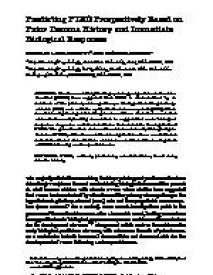Predicting PTSD Prospectively Based on Prior Trauma History and Immediate Biological Responses
Studies examining the biopsychology of posttraumatic stress disorder (PTSD) have suggested that PTSD is characterized by alterations of the primary stress pathways: the hypothalamic-pituitary-adrenal (HPA) axis and the sympathetic nervous system (SNS). More recent investigations point to the presence of these alterations soon after a traumatic event, leading researchers to suggest that acute biological responses may serve as risk or resilience factors for the development of PTSD. The present article reviews the evidence for early biological predictors of PTSD, with a focus on the role of prior trauma as a contributor to both hormonal abnormalities and increased risk for the development of PTSD following a subsequent trauma.
Geachte bezoeker,
De informatie die u nu opvraagt, kan door psychotraumanet niet aan u worden getoond. Dit kan verschillende redenen hebben,
waarvan (bescherming van het) auteursrecht de meeste voorkomende is. Wanneer het mogelijk is om u door te verwijzen naar de bron
van deze informatie, dan ziet u hier onder een link naar die plek.
Als er geen link staat, kunt u contact opnemen met de bibliotheek,
die u verder op weg kan helpen.
Met vriendelijke groet,
Het psychotraumanet-team.


